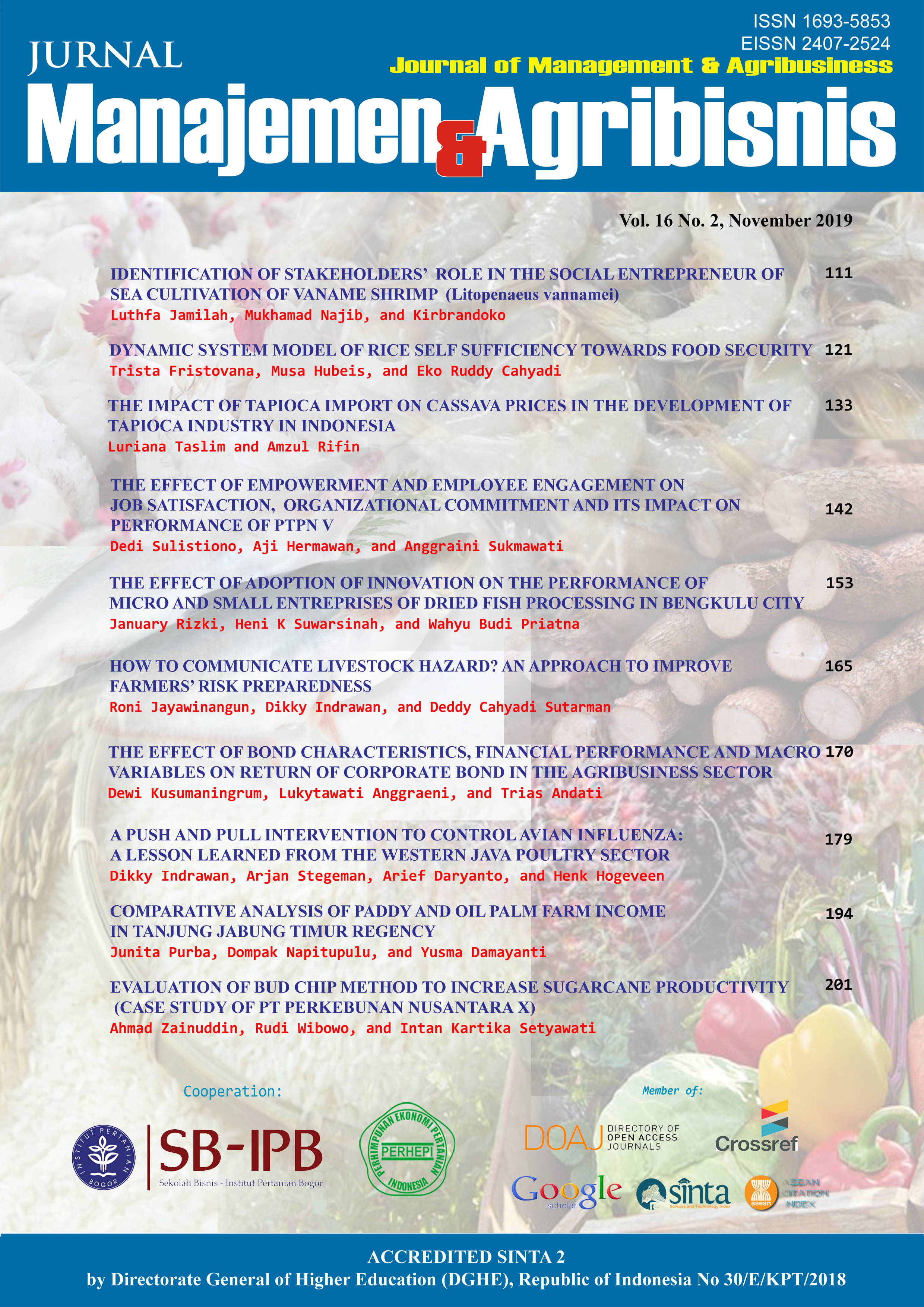DYNAMIC SYSTEM MODEL OF RICE SELF SUFFICIENCY TOWARDS FOOD SECURITY
Abstract
Food security is the condition of fulfilling individual food that is sufficient, safe, equitable and affordable. The main target of fulfilling food sufficiency is dominated by rice self-sufficiency. Rice self-sufficiency is important because it has special reasons in terms of politics and social economy. The sustainability of rice self-sufficiency faces many challenges because domestic rice supply growth is not as fast as rice use. The purpose of this study is to simulate the scenario of achieving self-sufficiency in rice and formulating policy recommendations for developing management to achieve self-sufficiency in rice. Research data includes primary and secondary data. This research uses a dynamic system approach. Simulations carried out from 2018-2045. The simulated policy is intensification, extensification, suppression of postharvest losses and Indonesia a self-sufficiency country as well as an exporter of rice (scenario five), but the policy requires a very large budget. Scenario six, a combination of intensification, suppression of postharvest losses and land conversion becomes an alternative operational policy and is most likely to be applied. Land conversion is the biggest determinant in rice self-sufficiency. Recommendations address for the government include: (1) establish and protect longterm rice fields, (2) identify and map of areas that have the potential for the development of a periodic expansion of food crops; (3) guarantee the availability of agricultural facilities and infrastructure in accordance with the selected policy, both in the form of the application of scenario six and scenario five.
Keywords: dynamic system, food security, policy, rice, self-sufficiency
Authors
Authors who publish with this journal agree to the following terms:
- Authors retain copyright and grant the journal right of first publication with the work simultaneously licensed under a Creative Commons Attribution License that allows others to share the work with an acknowledgement of the work's authorship and initial publication in this journal.
- Authors are able to enter into separate, additional contractual arrangements for the non-exclusive distribution of the journal's published version of the work (e.g., post it to an institutional repository or publish it in a book), with an acknowledgement of its initial publication in this journal.
- Authors are permitted and encouraged to post their work online (e.g., in institutional repositories or on their website) prior to and during the submission process, as it can lead to productive exchanges, as well as earlier and greater citation of published work (See The Effect of Open Access).

